Fungal diseases are very common in every garden because they spread very easily. All you need is some wind and they will enter your garden from every direction. Here are just some of the fungal disease you may face in your own garden.
Contents
- 1 Fungal Diseases
- 1.1 Alternaria Blight
- 1.2 Anthracnose
- 1.3 Apple Scab
- 1.4 Ascochyta Blight
- 1.5 Black Knot
- 1.6 Roses with Black Spots
- 1.7 Fuzzy Gray Mold
- 1.8 Brown Rot
- 1.9 Cabbage Yellows
- 1.10 Clubroot of Cabbage
- 1.11 Corn Leaf Blight
- 1.12 Damping-Off
- 1.13 Downy mildew
- 1.14 Early Blight of Tomatoes
- 1.15 Early Blight Affecting Celery
- 1.16 Fusarium Wilt
- 1.17 Late Blight of Tomato
- 1.18 Peach Leaf Curl
- 1.19 Powdery Mildew
- 1.20 Red Stele
- 1.21 Root Rot
- 1.22 Rust
- 1.23 Smut of Onion and Corn
- 1.24 Southern Blight
- 1.25 Verticillium Wilt
- 1.26 White Mold
Fungal Diseases
Alternaria Blight
This fungal disease can infect carrots, parsley, cucumbers, beans, onions, watermelon and some herbs and ornamentals. Leaves often form small black dots with a small halo that encircles them. Older leaves will usually show signs of the fungus and will turn yellow, curl, and die. The seedlings of these fungi will only sprout in damp conditions from morning dew or rain.
Anthracnose
Many plants can be exposed to anthracnose. Some of the most prone will include beans, cucumbers, melons, strawberries, tomatoes, turnips, and some wild weeds.
This fungus is capable of appearing on any part of the plant including the stems, leaves, and even possibly the fruit or vegetable. Although they differ slightly from each species of plants they generally cause spots of yellow, purple, or brown color. If lesions appear of plants or fruit they will be a more distinctive pinkish color.
Bean leaves will be dark and angular and the pods will form dark brown spots. Cantaloupe leaves with have a lighter brown and turn a light reddish hue. On the other hand black lesions will appear on your watermelon leaves. The fruit of both cucumbers and tomatoes will be dark in color and may have depressed concentric rings. Tubers of potatoes are much more noticeable because small black spots will appear on the skin. This is sometimes referred to as black dot with potatoes.
Apple Scab
This fungus first produces spots on the undersides of leaves on apples, crabapples, pears, and some ornamentals. They start off gray and later turn somewhat soft or velvety and a dark brown color. The fruit of these trees can also be affected as well.
If they are on the fruit they might become cracked after showing areas of olive colored patches. In light infections the fruits will only have a few dots which won’t be much of a problem. If your trees are severely infected the fruit may not grow to size and probably deformed.
Ascochyta Blight
Most legumes, beans, okra, peas, alfalfa, clover, tomatoes and many other crops are vulnerable to ascochyta blight. These fungi not only affects the leaves, but the roots and pods are damaged as well. It is actually not one type of fungi species, but is three that affect these types of plants.
Small tan spots appear on your pea or bean pods and will eventually enlarge and darken with the progression of the infection. The pods will die in the end once the fungi attack most of the plant. Watch the stems on the soil line because you may see lesions that will also be a sign that your plants are being damaged. On tomatoes you will most likely see dark spots that will have rings around them which are some signs that you could have the fungal disease ascochyta blight.
Black Knot
This is a fungus that affects only cherry, plum, and various wild trees in coastal regions. Large black material starts to grow on branches usually at the tips. They are very fast producing and only a little bit of wind and the spores will spread like wild fire. If you find this on your trees remove infected branches immediately. Large infections can destroy branches, flowers, and fruit eventually killing the tree.
Roses with Black Spots
Roses will show dark spots on leaves that can be outlined by a yellow color. When these spots appear leaves will eventually turn yellow and die. Sometimes an entire rose plant can lose all of its leaves by mid to late season. In rare occasions the petals or canes could produce the same black spots that leaves do.
Fuzzy Gray Mold
You can find this mold on a variety of plants and fruits such as strawberries, raspberries, grapes, beans, cucumbers, and possibly flowers. This mold/fungus starts during cool, rainy, and cloudy weather conditions where fungi thrive in. Berries that touch the ground are more susceptible and this is one of the reasons that you should put straw on the ground to prevent them from being water soaked.
Brown Rot
Tree fruits especially apples, pears, nectarines, almonds, apricots, and cherries can develop brown rot. The flower petals of these trees are the first to show symptoms of infection and will inevitably spread throughout the entire flowers and most of the tree. Brown spots appear followed by a soft fuzzy mold. Fruit that is ripening will begin to shrivel and might fall on the ground or sometimes may stay on the branches.
Cabbage Yellows
All Brassica and cabbage type plants are affected. The leaves of these plants will turn to a dull green and then yellow follows. The fungus moves upwards through the plant causing the vascular system to become damaged and when the stem is cut will show black colored innards. If you are to consume these plants you better be prepared for an unpleasant bitter taste.
Clubroot of Cabbage
Mostly cabbage plants along with bent grass, orchard grass, and rye grass are affected by this fungal disease. During the middle of the day many of your plants will wilt and during the evening when the temperature drops some of them may perk up. The roots are the most damaged part of the plant and may produce large gal shaped mass. In greater infections most of the roots will be so damaged that the plants will die quickly because of the lack of proper nutrient uptake.
Corn Leaf Blight
There are two types of blight that can occur; southern corn leaf blight and northern corn leaf blight. In southern leaf blight it first appears with small tan spots that will eventually elongate over time. They could grow up to eight inches long on the leaves and will spread to the husks, ears, and stalks. When they find their way to the ears it will dry out the corn and could start to rot. In humid and moist weather black moldy spots will appear on the kernels and possibly other parts of the plant.
Northern blight is quite similar to southern blight except they start as long brown patches on the lower leaves of the stalk. These grey streaks will move its way up the plant and will start to turn into a tan type color. They can appear on the husks, but luckily they will not affect the ears or kernels. Just like southern corn leaf blight in hot weather black spores will start growing on these tan streaks.
Damping-Off
These fungi are able to attack all plants and occur usually to seedlings and plants that are beginning to sprout. When seedlings are affected the plant may sprout, but will eventually die off because of the infection. If you plants are able to sprout you may see rotting sections on the stem or roots that are very close to the soil line. Some may survive the initial attack, but growth will be severely stunted producing a poor crop.
Downy mildew
Tomatoes, strawberries, spinach, beets, onions, and brassicas (cabbage, broccoli, kale, etc.) are some of the more prone plants to contract downy mildew. The oldest leaves of the plant will show signs of downy mildew. A white powdery substance that can also be purple and light grey will be very visible on the leaves. These leaves will wither and die while other plants will have stunted fruit such as cucumbers. If you are growing plants with pods then you will notice the mildew on the pods instead of the leaves.
Early Blight of Tomatoes
This fungus attacks tomatoes, potatoes, and others that are related to them. Concentric rings around dark spots are what you will see mainly on the leaves of potatoes and tomatoes. They enter through wounds and work their way up the plant possibly affecting the fruit. Tomatoes will have large dark rot inside the fruit while the tubers of potatoes produce black spores which will cause them to turn moldy quickly.
Early Blight Affecting Celery
You will begin to notice small yellow spots on the leaves of celery if your plants have been infected by this pathogen. The outside leaves are the main point of entry and then they work their way up the entire plant. Your crop yields will be greatly diminished and vegetables would not be as vibrant as they should be.
Fusarium Wilt
Tomatoes are the biggest victims of Fusarium wilt, but could also affect cabbages, onions, beets, ornamentals, and many more vegetables. This is a devastating fungus that can easily ruin entire crops. Leaves of tomatoes are going to curl downward when infected with Fusarium wilt.
The stems may have black or brown streaks on the lower part of the stem and possibly near the roots. Leaves will quickly turn brown and die. This fungal disease does not usually affect the fruit if your plants happen to produce any. This fungus can arrive from the seed stage all the way to the end of the season.
Late Blight of Tomato
Here is another fungus you need to pay attention for when growing either potatoes or tomatoes. Some species of peppers are also affected by late blight. The leaves are where you should see infection with light green spots that will turn dark and will probably crumble very easily.
You may notice an odor coming from some of your plants and this is usually caused by the spores that have entered the cells of your plants. Potato tubers will have skin that contains purple colored areas and with time a white mold may appear on them as well. Cutting these purplish spots will reveal a reddish brown hue that will rot the entire potato.
Peach Leaf Curl
Peaches, nectarines, and plums are targeted by this fungus. Your leaves are going to look curled and crinkly with a slight reddish color to them. Various leaves can show a white and purplish color as well, but a thickened deformed leaf will be most noticeable. Normally the fungus affects just the leaves, but unfortunately large infestations of these fungi will also start attacking the blossoms, shoots, and fruit as well.
Powdery Mildew
This fungus is a white powdery substance that can end up on pretty much any type of plant in your garden. They affect all kinds including fruit, vegetables, flowers, and even grasses. It is common to find them covering the leaves of your plants. In some instances they can also infect roots, flower buds, and even pods. With cucumber plants the vegetable may ripen prematurely causing them to be very small and not very flavorful.
Red Stele
Red stele is most common with berries specifically strawberries and loganberries. This mainly occurs in places with poor drainage and very wet conditions. Your leaves will quickly become stunted and various colors such as purple and gray may take place of the green leaves. They will eventually turn yellow or red and if you were to cut the stems or roots you will notice a red color which is why this fungal disease is called red stele.
Root Rot
All plants can easily be infected by root rot. It is common to see leaves turn yellow and die, but if plants are infected while young they will wither and die. You also may see dark or black lesions around the crown of the plant which is a good sign to look for root rot.
This fungus usually attacks the feeder roots first since these roots are the ones that are very important for growth of all your plants. Once there are no more feeder roots then the main stem will be attacked and at this point the plant will probably not be able to survive.
Rust
With many different species and varieties of rust you can be sure that all plants are susceptible to this type of fungus. Depending on the type of plant that is affected they can have very different colors and affect different parts of the plants. Fruits and flowers can have a rusty type of color or they could turn yellow and then brown. Sometimes you will see small orange spots that appear on leaves or you can find them on the stems of many plants. Stunted and low growth of plants will occur when they are seriously infected.
Smut of Onion and Corn
While corn smut is most common in the south onion smut is primarily located in the north. Galls will form on corn ears and sometimes on the skin. They are a large mass of white balls that can cover the entire ear. They can be the size of golf balls or larger when they continue growing. Once they reach their peak size the covering will give way releasing thousands of other spores that will continue infecting your garden.
Onions are pretty much the same with the first stem that appears from your onion bulbs will have blisters on it. They will eventually work their way to the skin of the actual onion and then on to the roots. Just like corn smut the galls will burst wide open and release a mass of spores continuing to wreak havoc on your plants.
Southern Blight
Melons, beans, tomatoes, and some grasses and other vegetables are some plants that can contract southern blight. Waterlogged roots are one of the first symptoms that you will see on your plants along with wilting leaves. Within a few days from the initial infection a white colored growth will appear on the plant or around the soil. This white color will change to a possible reddish or dark color which will make it much easier to see.
Verticillium Wilt
Verticillium wilt is one of the more devastating fungal diseases that can infect many types of plants. Tomatoes are especially vulnerable along with potatoes, eggplants, trees, ornamentals, and various other vegetables. Wilting is common with this fungus and plants generally are no longer as productive as they should be. Leaves can curl, but will most likely turn yellow and fall to the ground. Plants will eventually succumb to the fungus and not survive. You will find a dark tissue within the stems that will signify an infection of some sort of fungus.
White Mold
This mold mainly occurs in wet conditions that occur during the springtime. As long as the spring is full of sun and rain it should not be a problem. Cloudy weather and wet soil will produce the conditions for this mold to grow. Older leaves will begin to look brown and eventually will drop. Stems of the plant will be very soft and may have a soft fungus growing on it.
The mold will most likely damage your plant and it will stop producing leaves and fruit that are worth eating. Common among cool weather plants, but can occur in any type of plant in your garden. Plants such as lettuce, spinach, kale, cabbage, celery, beans, peas, are more at risk.
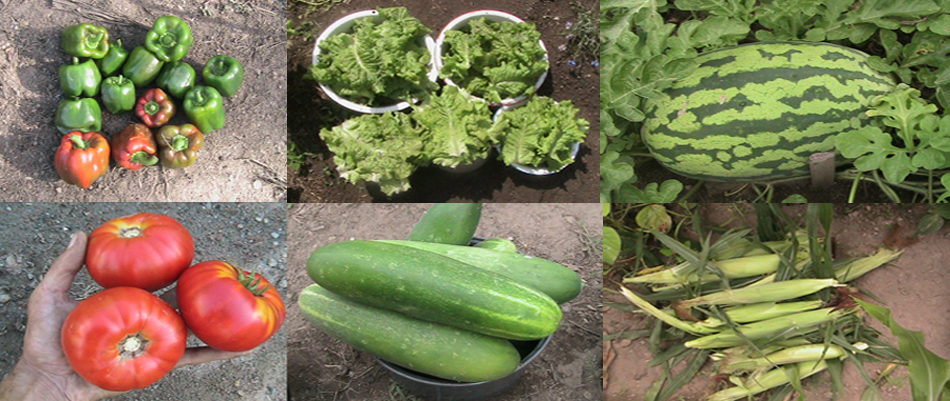
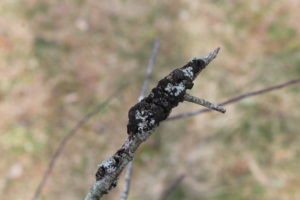
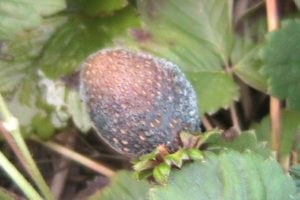
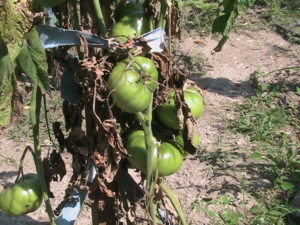
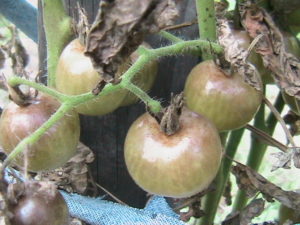
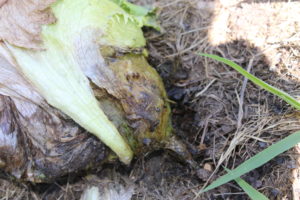

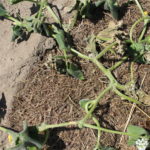


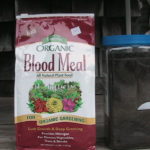
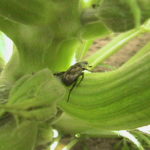
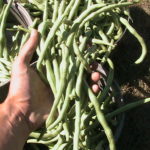
Recent Comments